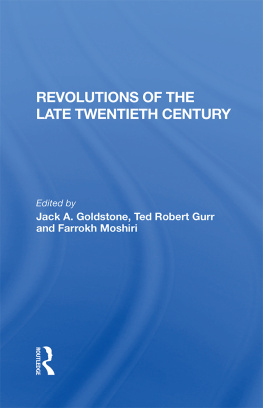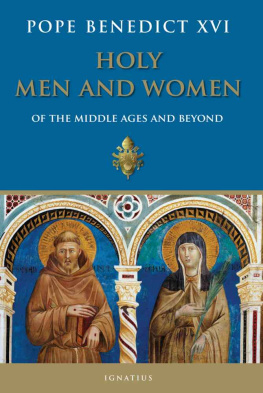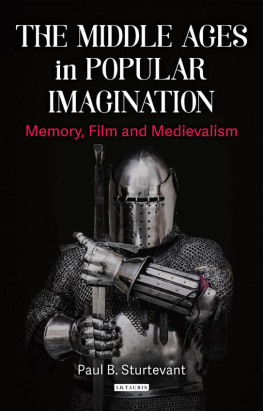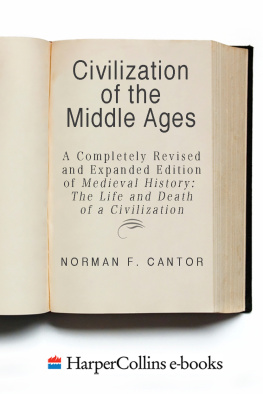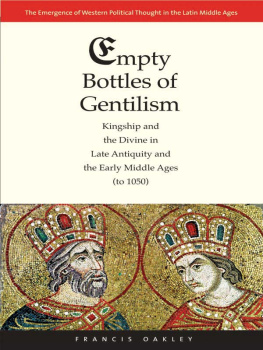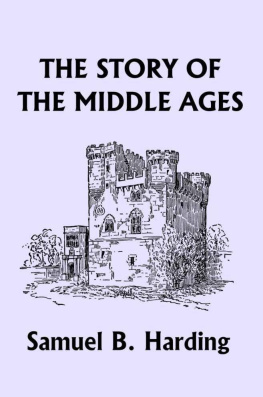REVOLUTION
Volume 22
THE POPULAR REVOLUTIONS OF THE LATE MIDDLE AGES
THE POPULAR REVOLUTIONS OF THE LATE MIDDLE AGES
MICHEL MOLLAT PHILIPPE WOLFF
First published in 1973 by George Allen & Unwin Ltd
This edition first published in 2022
by Routledge
4 Park Square, Milton Park, Abingdon, Oxon OX14 4RN
and by Routledge
605 Third Avenue, New York, NY 10158
Routledge is an imprint of the Taylor & Francis Group, an informa business
1973 George Allen & Unwin Ltd
All rights reserved. No part of this book may be reprinted or reproduced or utilised in any form or by any electronic, mechanical, or other means, now known or hereafter invented, including photocopying and recording, or in any information storage or retrieval system, without permission in writing from the publishers.
Trademark notice: Product or corporate names may be trademarks or registered trademarks, and are used only for identification and explanation without intent to infringe.
British Library Cataloguing in Publication Data
A catalogue record for this book is available from the British Library
ISBN: 978-1-032-12623-4 (Set)
ISBN: 978-1-003-26095-0 (Set) (ebk)
ISBN: 978-1-032-12729-3 (Volume 22) (hbk)
ISBN: 978-1-032-12735-4 (Volume 22) (pbk)
ISBN: 978-1-003-22598-0 (Volume 22) (ebk)
DOI: 10.4324/9781003225980
Publishers Note
The publisher has gone to great lengths to ensure the quality of this reprint but points out that some imperfections in the original copies may be apparent.
Disclaimer
The publisher has made every effort to trace copyright holders and would welcome correspondence from those they have been unable to trace.
THE GREAT REVOLUTIONS SERIES No. 6
The Popular Revolutions of the Late Middle Ages
MICHEL MOLLAT PHILIPPE WOLFF
TRANSLATED BY A. L. LYTTON-SELLS
First Published in 1973
This book is copyright under the Berne Convention. All rights are reserved. Apart from any fair dealing for the purpose of private study, research, criticism or review, as permitted under the Copyright Act, 1956, no part of this publication may be reproduced, stored in a retrieval system, or transmitted, in any form or by any means, electronic, electrical, chemical, mechanical, optical, photocopying, recording or otherwise, without the prior permission of the copyright owner. Enquiries should be addressed to the publishers.
George Allen & Unwin Ltd 1973
ISBN 0 04 940040 I hardback
0 04 940041 x paper
Printed in Great Britain
in 11-point Baskerville Type
by The Aldine Press, Letchworth, Herts
Maps
- Paris in the Fourteenth Century
- The Jacquerie: 1358
- Florence in the Middle Ages
- The Netherlands in the Fourteenth Century
- The Peasants Revolt of 1381
- London in 1381
- The 1391 Pogrom in the Iberian Peninsula
- Barcelona towards 1390
- Bohemia in the Fifteenth Century
Introduction
P opular R evolutions : this expression has not been easy to select for the phenomenon we propose to study. Of the two words, popular is the less debatable. Populares is the word generally used in all countries to specify the class of people who take part in these risings. Other terms such as the common people, the lean folk or the mechanics sometimes occur, while ill-disposed witnesses add that they are base fellows of mean estate. In any case it is a question of a lower class of peasants and artisans, engaged in regular but not lucrative work, and also of vagabonds and of the destitute. We propose to examine the risings only in so far as the lower classes1 as such take part in them and as they involve social disturbances conflicts arising from economic and social causes. In some places we find workmen going on strike for higher pay; in others, conflicts among the rural nobility; in others again, risings for the purpose of imposing on the government a more just social policy in regard to taxation or in time of famine.
All this leads us to set aside political or religious disturbances, troubles in which the lower classes as such do not participate. Not that the dividing-line is always clear. The lower class might be used, or more or less misused, as a main striking-force in conflicts that did not strictly concern it. Anti-Jewish pogroms throw light on the attitude of various classes in society and we shall be mistaken in not using the information they yield. The connection between popular agitation and the major heresies raises a thorny problem. Was not the Church an essential part of the established order? Was not an attack on the latter also an attack on the former? Was not a heretic also a revolutionary? What link was there between such major heresies as those of Wyclif and the Lollards, and of John Huss, and contemporary agitations? We shall be obliged, more than once, to overstep the border-line which a strict interpretation of popular risings would have imposed.
1 In the sense of the poorer groups. The authors explain at the end of this book that class-consciousness hardly existed in the Middle Ages. (Translator.)
What of the word Revolutions? Were we to accept Littrs definition, that a revolution is a sudden and violent change in the politics and government of a state, our harvest would be meagre indeed. How many mere riots which have quickly collapsed have left intact the conditions they appeared to threaten! But also how many less spectacular signs do we see of deep-seated dissatisfaction with certain institutions: lawsuits, controversies, attempts at reform due to social pressure. These signs have been largely neglected by historians, and so much of the documentary evidence has been lost that they run the risk of being ignored. We should, however, take some account of them if we are to appreciate the revolutionary character of the age.
The revolutionary movements of the fourteenth century have hitherto been studied only in a national or regional framework. The great Peasants Revolt of 1381 in England; the revolutions in the Low Countries; the Jacquerie in the Ile-de-France; the Tumult of the Ciompi in Florenceto cite the most notable exampleshave been the subject of numerous works, but these have been too often limited to the rebellions in question. Would it not be better to consider the phenomenon in general, to draw as it were a map which would reveal the main centres of disturbance and the secondary regions, to suggest possible connections in time and to examine the problems which these raise? Were there more or less simultaneous waves of revolution in Europe as a whole? And if so, can they be explained by contagion, or were they occasioned by similar causes? It seems important to compare these rebellions and try to discern their general, and their distinctive, features. Little has been accomplished hitherto. One may note Mendls work in Czechoslovakia (1924); Aragoneses rapid sketch (1949); and the symposium of Marxist historians at Wernigerode (1960). We have the impression of exploring an ill-marked road with no one to guide us.
However, we must limit our inquiry to central and western Europe. Eastern Europe and the Scandinavian countries are little known, and their social and economic development has followed ways too different from those of the West for us to include them in our picture, even if an isolated episode should now and again tempt us to do so.




